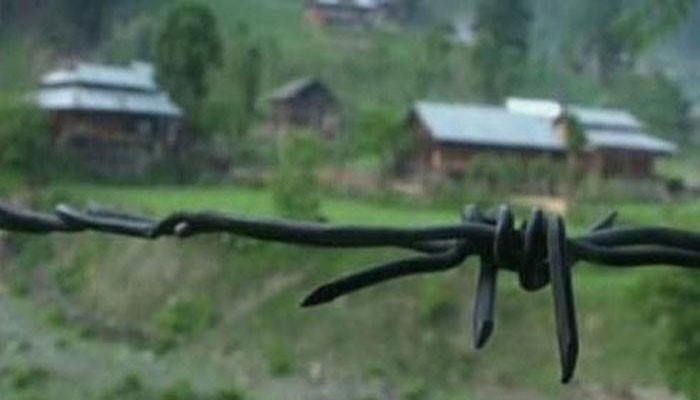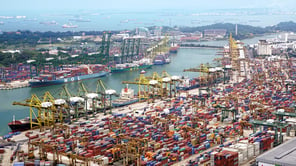WHEN SHIVANGI KAPOOR DID NOT RECOGNIZE HER OWN KIDS
 Shivangi Kapoor who has recently visited the set of Shraddha Kapoor and Siddhanth Kapoor’s Haseena Parkar almost ignored her children on set as she did not recognize them.
Shivangi Kapoor who has recently visited the set of Shraddha Kapoor and Siddhanth Kapoor’s Haseena Parkar almost ignored her children on set as she did not recognize them.
Apoorva Lakhia has done a commendable job in the transformation of Shraddha and Siddhanth into Haseena and Dawood which has been garnering them a lot of appreciation.
While on set both the actors were shooting together in their Haseena and Dawood’s get up when their mother came to see them. Shivangi who was standing right beside Shraddha and Siddhanth could not recognize them and asked the team to show her way to their changing room. Shivangi then called Shraddha and found the phone ringing right beside her.
Glancing at her kids in that avatar, Shivangi was quite thrilled of the transformation and the hard working the team is putting in to get the nuances of their character.
Apoorva Lakhia shares, “It was quite funny when Shivangi came on set and could not recognize Shraddha and Siddharth who were right in front of her. When she finally saw them, she was very surprised and for us, it was a great moment as the authenticity of the look and transformation was appreciated in this way.”
Directed by Apoorva Lakhia, Haseena Parkar stars Shraddha Kapoor, Siddhanth Kapoor and Ankur Bhatia. Produced by Nahid Khan with Swiss entertainment and co-produced by Sameer Antulay & Babu Tyagi the film is set to release on 18th August 2017.
INDO-PAK DGMOS MAKE HOTLINE CONTACT
Press Information Bureau
Government of India
Pakistan calls for DGMO talks
DGMO level talks on behest of Pakistan’s DGMO was held on 17 Jul 17.
During the talks the Pak DGMO raised the issues of targeting of Pak Army troops which resulted in the death of four Pakistani soldiers and one civilian in Athmuqam Sector of Pakistan occupied Kashmir opposite Indian Keren Sector, Kupwara District.
Indian DGMO in response highlighted that all Cease Fire Violations were initiated by Pakistan Army and the Indian Army only responded appropriately to them. Apart from these, firing by Indian troops was initiated against armed intruders when attempting to infiltrate from close proximity of Pak posts along the Line of Control (LC).
DGMO also put across emphatically that the trend of infiltration along the LC continued with active support of Pak forward posts impacting peace and tranquillity along the LC and also the internal security situation. This was evident from continued attempts of sniping and targeting of our troops undertaken through cross border actions duly supported by Pakistani Army troops.
DGMO made it implicit that Indian Army reserved the right to retaliate appropriately to any incident of violation of ceasefire but is sincere in its effort of maintaining peace and tranquillity along the LC provided there was reciprocity.
Col Aman Anand
PRO (Army)
Report of Geo Media
The Pakistan and Indian Director General Military Operations (DGMO) made hotline contact on Monday a day after four Pakistani soldiers were martyred in unprovoked Indian firing along the Line of Control, sources said.
The Pakistani DGMO strongly protested the attack on the Pakistan Army vehicle and the subsequent martyrdom of four soldiers, sources added. They quoted the DGMO as saying that the Pakistan Army reserves the right to respond to Indian aggression.
The Pakistani DGMO asked the Indian counterpart to stop their country from violating the ceasefire agreement along the LoC.
On Sunday, the Indian troops targetted a Pakistan Army vehicle moving along the Neelam River in Athmuqam area of Azad Kashmir.
According to the Inter Services Public Relations, the vehicle fell in the river. As a result, four Pakistani soldiers on board in the vehicle drowned. Geo news
*PRESS MEET INVITE* MONDAY, 17TH JULY *UPDATE ON THE PREPARATIONS FOR THE FIBA WOMEN’S ASIA CUP*
Dear Editor
Hope you are well.
We cordially invite you to a press meet tomorrow to update you on our plans and preparations for the upcoming FIBA Women’s Asia Cup in Bengaluru.
Venue: President’s Lounge, Century Club, Bengaluru
Date & Time: Monday, 17th July, 4:00 pm onwards
(please reach the venue by 3:45 pm)
Shri K Govindaraj, President of Basketball Federation of India and Mr Anupam Agrawal [IPS], Director, Youth Empowerment and Sports will be presiding over the event, along with me.
We look forward to this opportunity to interact with the esteemed members of the press.
Regards,
Chander Mukhi Sharma
Secretary General
TPP AND INDIA: LESSONS FOR FUTURE GAINS BY HARSHA VARDHANA SINGH
New Brookings India Working Paper



No comments:
Post a Comment